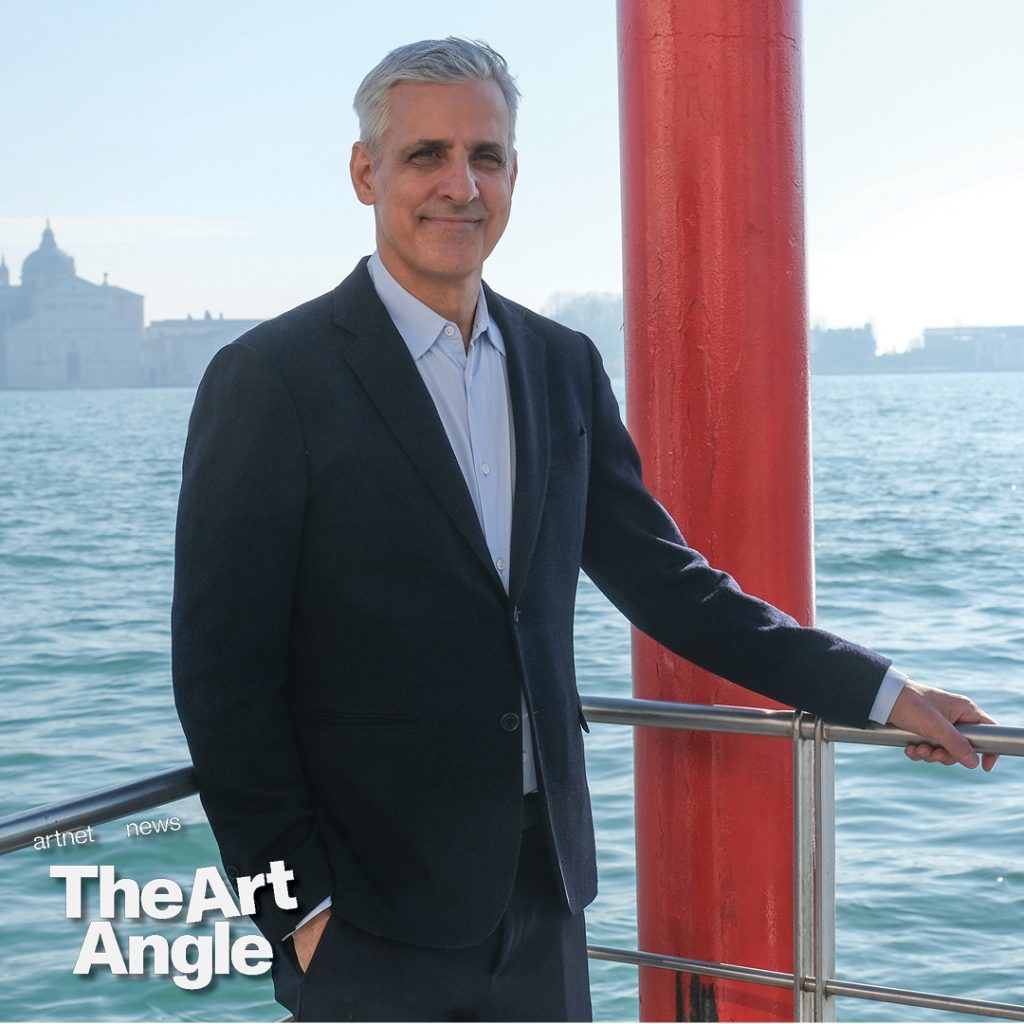The Art Angle
Re-Air: Why Adriano Pedrosa Sees His Venice Biennale As ‘Paying a Debt’
This week on the Art Angle podcast, we're re-airing Kate Brown's interview with Venice Biennale curator Adriano Pedrosa.

This week on the Art Angle podcast, we're re-airing Kate Brown's interview with Venice Biennale curator Adriano Pedrosa.

Artnet News

Summer is in full swing, which means that crowds from the world over are heading on vacation and many of them are descending in huge numbers into one of the most famous cities in the world—Venice, Italy.
Earlier this spring, the 60th edition of the Venice Biennale opened, curated by the highly esteemed Brazilian curator Adriano Pedrosa. His exhibition “Foreigners Everywhere” is a major feat, and a big talking point of the year. It features more than 330 artists, many of whom are participating in the biennale for the first time, and shines a light on artists who were woefully overlooked in their time.
There are multiple ways to look at the show and its title “Foreigners Everywhere,” which is inspired by a famous work of the same name by artist collective Claire Fontaine. It is both an acknowledgement of the artistic positions of exile of the immigrant or outsider, but also importantly asks of the audience to think about who exactly is a foreigner… and who is not. Pedrosa argues that deep down we are all foreigners, and this exhibition, which the curator describes as a “provocation,” arrives as the world is facing a multitude of emergencies centered around the very concepts of exile and belonging.
The reviews are in and well-worth reading; Artnet’s critic Ben Davis has a great three-part review of the show, and host Kate Brown spoke to Pedrosa before the exhibition opening in a wide-ranging interview that we’re revisiting this week. He offers tips on how to walk through the show, key background on the exhibition’s concept, and thoughts on how his show is repaying a debt.